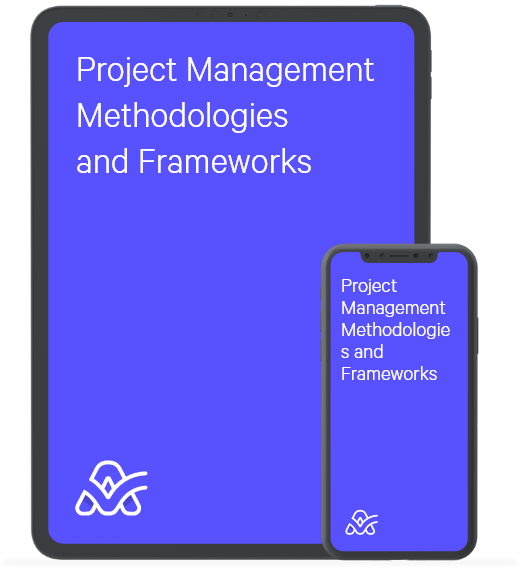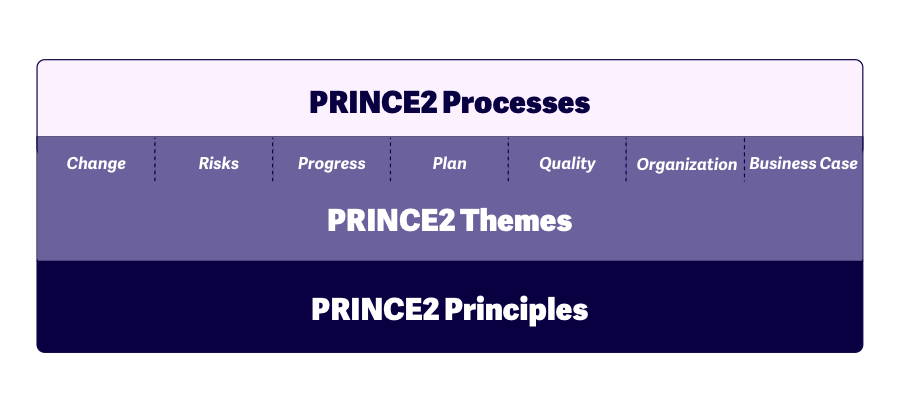Projects in Controlled Environments
PRINCE2, which stands for PRojects IN Controlled Environments, is a flexible process-based method that can help you wrap up projects more effectively and efficiently. Ever since it was first introduced by UK government as the methodology for executing government projects, it has been gaining massive appeal worldwide.
PRINCE2 has become an integral part of every project development in both private and public sectors especially in countries like Germany, Spain, South Africa, Belgium and the United States.
The importance of PRINCE2
In the sea of project management methodologies, you might ask yourself: What can I achieve with PRINCE2? What makes it stand out from other methodologies? How can it help my business grow?
In its core, every project development, especially in IT world, is highly unpredictable in nature. PRINCE2 will help you address the common cause of the project failure, and order your project into defined steps to make it more organized, logical and easy to handle. In other words, it allows you to structure each stage of the project in details and tie up all the loose ends once the project finishes.

Project Management Methodologies and Frameworks
PRINCE2 framework
We all know that poorly organized schedule and or lack of knowledge necessary to control all of the stages of project development can lead to irreversible consequences. For example, FBI’s ambitious project to replace paper based reporting of crimes with an online system fell flat due to lack of sound communication and thorough planning.The project was scrapped in 2005 and it cost $170 M.
According to PRINCE2 framework, a project should have:
- an organized and controlled start
- an organized and controlled middle
- an organized and controlled end
7 basic principles of PRINCE2 methodology
To better understand how PRINCE2 works, you need to become familiar with the 7 basic principles, the building blocks of this widely popular methodology:
- Continued justification of your business - unless there is a justifiable reason to run and manage the project (a defined customer and realistic benefits) the project should be closed.
- Learning from experience - PRINCE2 will allow your team to take part in the learning process, and continually upgrade their knowledge
- Clearly defined roles and responsibilities - each member of the team should have a clear insight into what they should be focusing on and what their teams are responsible for.
- Running the management in stages - the project is divided into separate stages and which are planned, monitored and controlled with the aim to record lessons learned and confirm is on the right track.
- Manage by exception - people on the team have the right amount of authority to manage and coordinate the project within the controlled environment. A project manager is in charge of delegating tasks and controlling the budget, the cost and the deadlines. In case certain, detrimental issues arise, project board enters the game and decides what the next step should be.
- Maintaining focus on the quality of products - teams continually check the product delivery, definition and the quality requirements
- The approach is adjusted for each project - PRINCE2 method is tailored to suit the requirements of each project (environment, size, complexity, importance, capability, and risk)
7 basic themes of PRINCE2
To run the project management sufficiently, managing all of its stages is not enough. If you want to be able to control your project, you need to have a deep insight into all of its aspects and address them accordingly. When it comes to PRINCE2 method, there are seven themes every project manager needs to tackle to run the project smoothly:
- Business case: create and maintain a record of business justification for the project
- Organization: define the roles and responsibilities of each member of your team
- Quality: what quality requirements and measures do you need to focus on and what steps do you need to take to deliver them
- Plan: what steps you need to take and what techniques you need to use to develop the plan of the project
- Risk: clearly identify the risks and opportunities that could affect the project
- Change: how you as a project manager will evaluate and tackle the changes on the project
- Progress: measure how fruitful the project performance is and whether the project is making any progress

7 processes of PRINCE2 methodology
Finally, “projects in controlled environments” is a process-driven project management method. There are seven processes you need to go through when managing the project:
- Starting up the project - assembling the project team, creating the project brief, agreeing upon project approach and approving the next phase of the project
- Starting-Initiating the project - documenting the project plan, risks, project controls and the plan for the next stage
- Starting-Directing a project - controlling the project, giving ad-hoc direction and confirming the end of the project
- Starting-Controlling a stage - controlling each stage separately by assessing the progress, managing issues, reviewing status and taking corrective actions
- Starting-Managing stage boundaries - updating the project plan and deciding what to do with stages once they have exceeded the tolerance level
- Starting-Managing product delivery - managing the execution of the project work, while making sure that the deliverables live up to the expectations
- Starting-Closing a project - project wrap up including documentation and outcomes
The advantages of PRINCE2
- Easy to manage because it can be broken into several stages. This keeps your team's focus on delivering the positive outcome
- Improves the communication not only between team members but also between the team and other stakeholders which gives the team more control over the project
- It allows the team to save a lot of their time and become more economical when it comes to using other resources and cutting down on some major costs along the way
- The flexibility of this approach allows your team to make decisions and changes as the project develops, thus minimizing the impact of possible issues that may arise
- It allows your team to recognize the deviations and possible problems at early stages and have a clear view of the lessons learned which they can use on future projects
The disadvantages of PRINCE2
PRINCE2 may not be tailored for some modern project management methodologies (such as projects in the software industry) because it does not offer the level of flexibility these methodologies usually offer.
